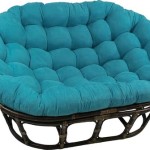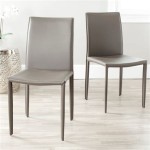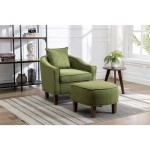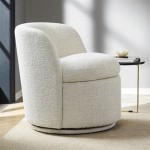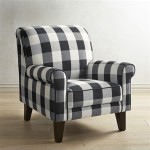The Enduring Appeal of Wooden Desk Chairs with Arms
The wooden desk chair with arms represents a classic and functional seating option for various settings, ranging from home offices to executive suites. Its inherent durability, timeless aesthetic, and potential for ergonomic design have solidified its position as a steadfast choice despite the proliferation of modern, synthetic alternatives. The selection of a wooden desk chair with arms involves considering several factors, including wood type, construction methods, ergonomic features, and aesthetic compatibility with the surrounding environment.
Wooden chairs, in general, have a long and rich history, predating many other furniture forms. The inclusion of arms elevates the basic chair design, offering enhanced support and comfort for the user, particularly during prolonged periods of sitting. This article will explore the various aspects of wooden desk chairs with arms, examining their benefits, key considerations for selection, and the factors contributing to their continued popularity.
Durability and Longevity
One of the primary advantages of a wooden desk chair with arms is its inherent durability. Wood, when properly sourced and treated, can withstand significant weight and stress, ensuring a long lifespan for the chair. Hardwoods, such as oak, maple, and cherry, are particularly prized for their strength and resistance to wear and tear. Softwoods, like pine, may be used in less structurally critical components or in chairs designed for lighter use. The durability of a wooden chair also depends on the joinery techniques used in its construction.
Traditional joinery methods, such as mortise and tenon, dovetail, and dowel joints, create strong and stable connections between the various chair components. These methods, often employed by skilled artisans, have proven their reliability over centuries. Modern manufacturing techniques may utilize screws, adhesives, or other fasteners to supplement or replace traditional joinery. The choice of joinery method significantly impacts the chair's overall strength and longevity, and it should be a key consideration during the selection process.
Furthermore, the finish applied to the wood plays a crucial role in protecting it from environmental factors, such as moisture and UV radiation. A high-quality finish can prevent warping, cracking, and fading, preserving the chair's aesthetic appeal and structural integrity for years to come. Regular maintenance, including cleaning and occasional refinishing, can further extend the life of a wooden desk chair.
Ergonomic Considerations
While wooden chairs are often associated with traditional aesthetics, incorporating ergonomic features is essential for ensuring user comfort and promoting good posture. A properly designed wooden desk chair with arms should provide adequate lumbar support, encouraging the natural curvature of the spine. The seat height should be adjustable to accommodate users of different sizes, allowing them to maintain a comfortable and ergonomic posture while working at their desk. The angle of the seat and backrest can also be adjusted to further customize the chair's ergonomics.
The placement and design of the arms are crucial for supporting the user's arms and shoulders, reducing strain and fatigue. The armrests should be positioned at a height that allows the user to rest their forearms comfortably without hunching their shoulders. Some wooden desk chairs with arms feature adjustable armrests, allowing for even greater customization. Padding or upholstery on the seat and backrest can enhance comfort, particularly during extended periods of sitting. The choice of padding material can affect the chair's breathability and overall comfort level.
The overall weight capacity of the chair is another important ergonomic consideration. It is crucial to select a chair that can safely support the user's weight. Exceeding the weight capacity can compromise the chair's structural integrity and increase the risk of injury. Many wooden desk chairs are designed with a weight capacity range in mind, and this information should be readily available from the manufacturer or retailer.
Aesthetic Versatility and Design
Wooden desk chairs with arms offer a wide range of aesthetic possibilities, making them suitable for various design styles and office environments. The natural beauty of wood provides a warm and inviting feel, and the choice of wood species, finish, and design details can significantly impact the chair's overall aesthetic. Light-colored woods, such as maple and birch, create a bright and airy atmosphere, while darker woods, such as walnut and mahogany, convey a sense of sophistication and formality. The finish applied to the wood can range from a natural oil finish that highlights the wood's grain to a high-gloss lacquer that provides a sleek and modern look.
The design of the chair can range from simple and minimalist to ornate and decorative. Some wooden desk chairs feature clean lines and a streamlined silhouette, while others incorporate intricate carvings and embellishments. The choice of design should complement the existing furniture and décor in the office or home workspace. A traditional executive office may benefit from a richly carved wooden desk chair with arms, while a modern minimalist office may be better suited to a chair with a simpler design.
The addition of upholstery can further enhance the aesthetic appeal of a wooden desk chair with arms. Fabric or leather upholstery can add color, texture, and visual interest to the chair. The choice of upholstery material should be carefully considered, taking into account factors such as durability, comfort, and ease of maintenance. Upholstery can also be used to incorporate specific design elements or color schemes into the chair.
Maintenance and Care
Proper maintenance and care are essential for preserving the beauty and longevity of a wooden desk chair with arms. Regular cleaning is necessary to remove dust, dirt, and spills. A soft, damp cloth can be used to wipe down the wood surfaces, and a mild soap solution can be used for more stubborn stains. Harsh chemicals and abrasive cleaners should be avoided, as they can damage the finish. Dusting frequently with a microfiber cloth will prevent the buildup of particles that can scratch the finish over time.
Protecting the chair from excessive moisture is also important. Spills should be cleaned up immediately to prevent water damage. The chair should be stored in a dry environment, away from direct sunlight and extreme temperatures. The wood can dry out or warp if exposed to direct sunlight, excessive heat, or extreme dryness. If the chair is used in a humid environment, consider using a dehumidifier to help maintain optimal humidity levels.
Periodic refinishing may be necessary to restore the chair's finish and address any scratches or wear marks. The frequency of refinishing will depend on the chair's usage and the type of finish applied. Minor scratches and blemishes can often be repaired with a touch-up kit or furniture polish. More extensive damage may require professional refinishing. Regular inspection of the chair's joints and hardware is also recommended. Loose screws or joints should be tightened or repaired promptly to prevent further damage.
Sustainability Considerations
The sourcing of wood for furniture production significantly impacts environmental sustainability. Opting for wooden desk chairs with arms made from sustainably harvested wood is an environmentally responsible choice. Sustainable forestry practices ensure that trees are harvested in a manner that protects forest ecosystems and promotes long-term forest health. Certifications such as the Forest Stewardship Council (FSC) provide assurance that wood products meet specific environmental and social standards.
The manufacturing process also plays a role in sustainability. Look for manufacturers who utilize environmentally friendly production methods, such as minimizing waste, reducing energy consumption, and using non-toxic finishes. The longevity of a wooden desk chair contributes to its sustainability. A well-built wooden chair can last for decades, reducing the need for frequent replacement and minimizing the environmental impact associated with manufacturing and disposal. Refurbishing or repurposing existing wooden furniture is also a sustainable alternative to purchasing new items.
Consider the origin of the wood. Locally sourced wood often has a lower carbon footprint than wood that is transported over long distances. Supporting local woodworkers and furniture makers can also contribute to the local economy. Look for manufacturers who are transparent about their sourcing and production practices. Many companies are now providing detailed information about their sustainability initiatives.

Antique Desk Chair Wood Swivel Office On Casters Etsy

Antique Solid Oak Banker S Desk Chair C 1930 1956 S16 Home

Magic Brown Suede Fabric Swivel Office Task Chair With Arms And Lumbar Support

Danish Modern Office Desk Chair In Solid Walnut Midcentury Chairs For Sale Sweet Akron Oh

Antique Solid Oak Banker S Desk Chair C 1930 1956

Vintage Murphy Solid Wood Mission Bankers Library Office Chair Armchair Ebay

Amish Heritage Swivel Dining Room Chair Or Office

Virco 9700brlh Left Handed Tablet Arm Chair Desk With Laminate Top 18 Plastic Seat And Book Rack Grey Nebula Black

Allwex Magic Brown Suede Fabric Swivel Office Task Chair With Arms And Lumbar Support Skl100 The Home

Adjustable Upholstered Swivel Office Desk Chair Faux Leather Comfy In Black Homary

